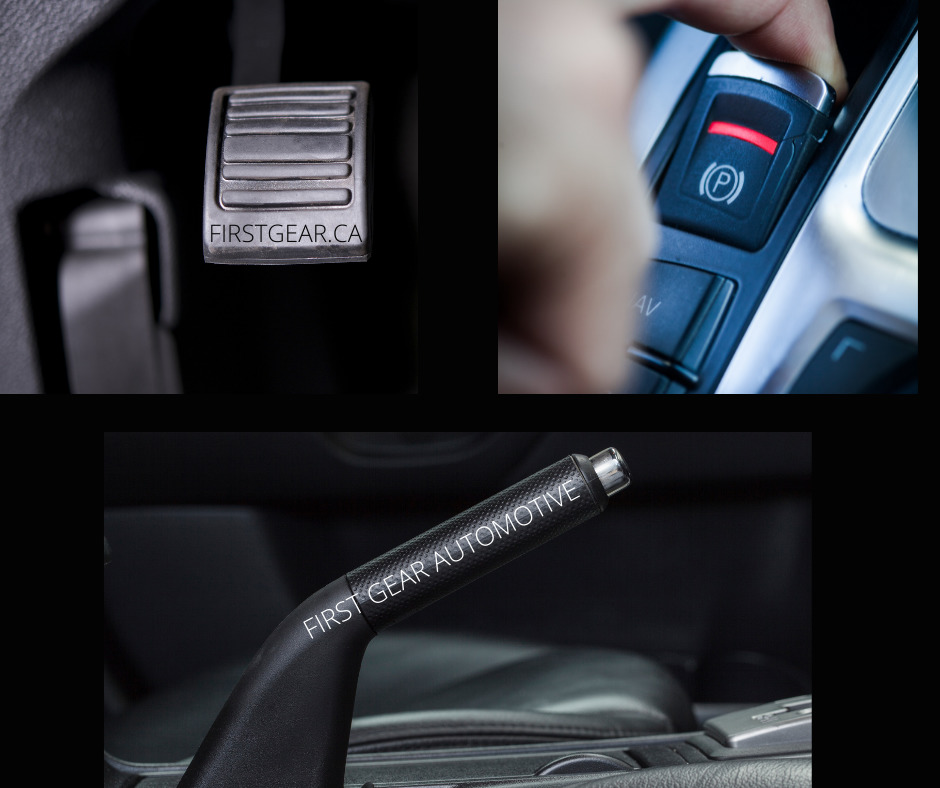How To Use Your Emergency & Parking Brake

The term “emergency brake” is a bit misleading. In an absolute emergency the auxiliary brake may be used. but it is still more useful as a parking brake. Emergency and parking brakes that aren’t used can rust. Rusty brakes don’t work properly. First Gear recommends using your parking brake EVERY time you park to help avoid rusting.
Park It
A parking brake, also called an emergency brake or e-brake, is a mechanical hand lever or foot-operated brake or a switch/push button that is a backup braking system and makes sure your car stays put when you stop. It is located either between the front two seats or to the left of your gas and brake pedal. A parking brake controls the rear brakes and is a completely separate device from your vehicle’s regular hydraulic brakes. Your cars regular brake system works through hydraulic pressure. Which is when you harness the force of liquid, in this case your brake fluid. Your parking brake works on an auxiliary brake system which uses cables and levers to operate. The steel cables are attached to the parking brake, and when this is pulled (or the pedal is pressed), the steel cables are tightened. The cables will pull a lever that compress the brake shoes and bypass the regular hydraulic brakes to stop the vehicle. Parking brakes also have a self-locking system, which means that the brake won’t be released unless the lever or foot brake is released.
Emergencies
OK so you use your parking brake each time you park, but what if you have to use it in an emergency? Does the emergency brake really help in a brake emergency?
Short answer: it depends. If your car’s e-brake is a hand brake then yes. You have more control with a hand brake. You can pull up slightly if you need a little breaking power or entirely for full braking. When you pull up fully this locks the back wheels which can then cause you to lose traction. With the hand brake you have the ability to release this lock up easily by releasing the brake. The hand brake is a lot weaker than your regular foot brake, it will not slow you down as quickly. With a foot pedal e-brake, pressing it immediately locks the rear wheels. To release it you either have to push back down on the pedal or pull a latch under the dash. Reaching for the release latch greatly impairs your visibility. Losing traction and visibility for a moment can make the situation far more dangerous. This pedal was designed to be a parking brake, not an emergency brake. First Gear recommends using a foot parking brake to slow down your vehicle when there is no other safe option.
